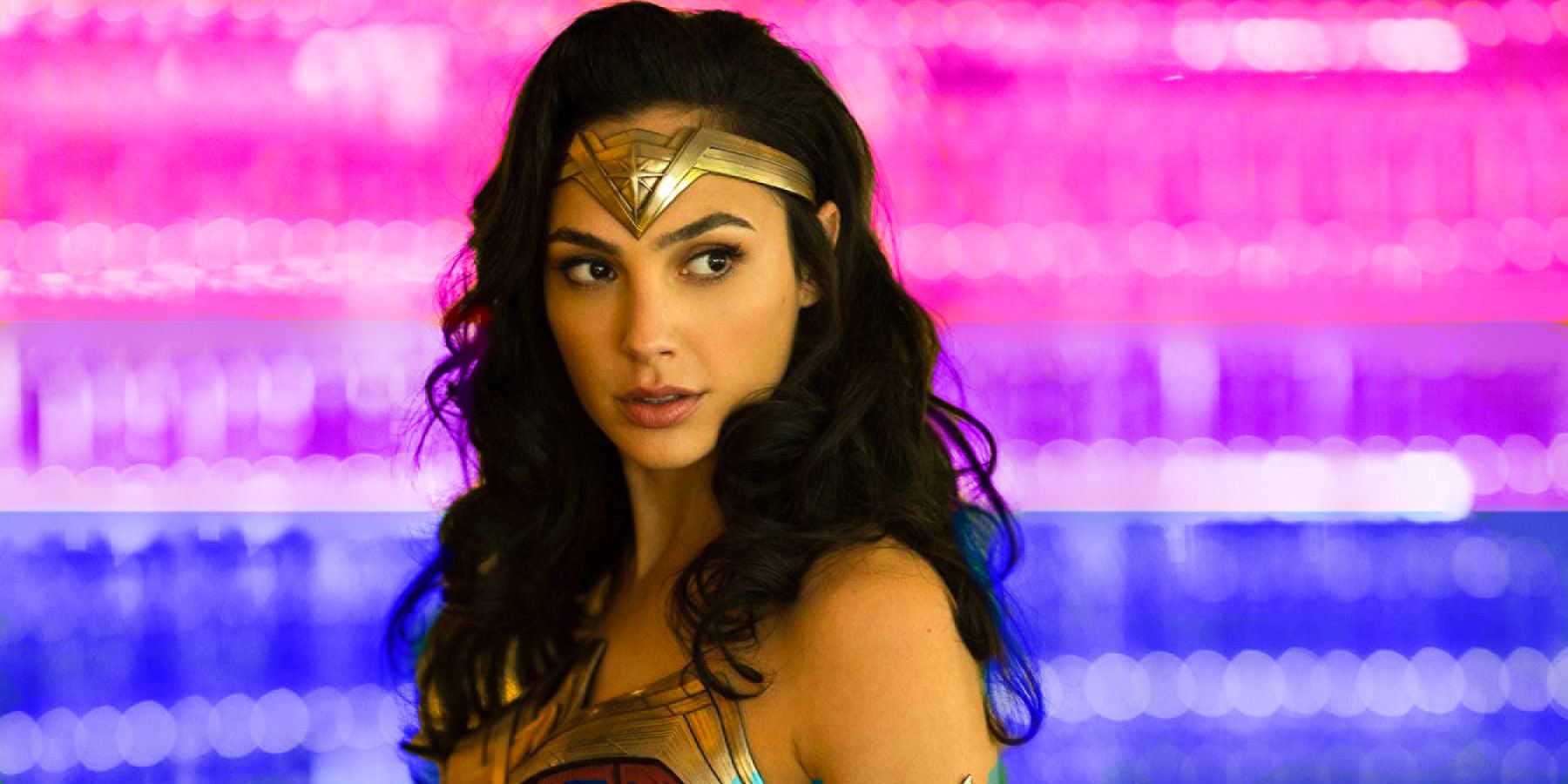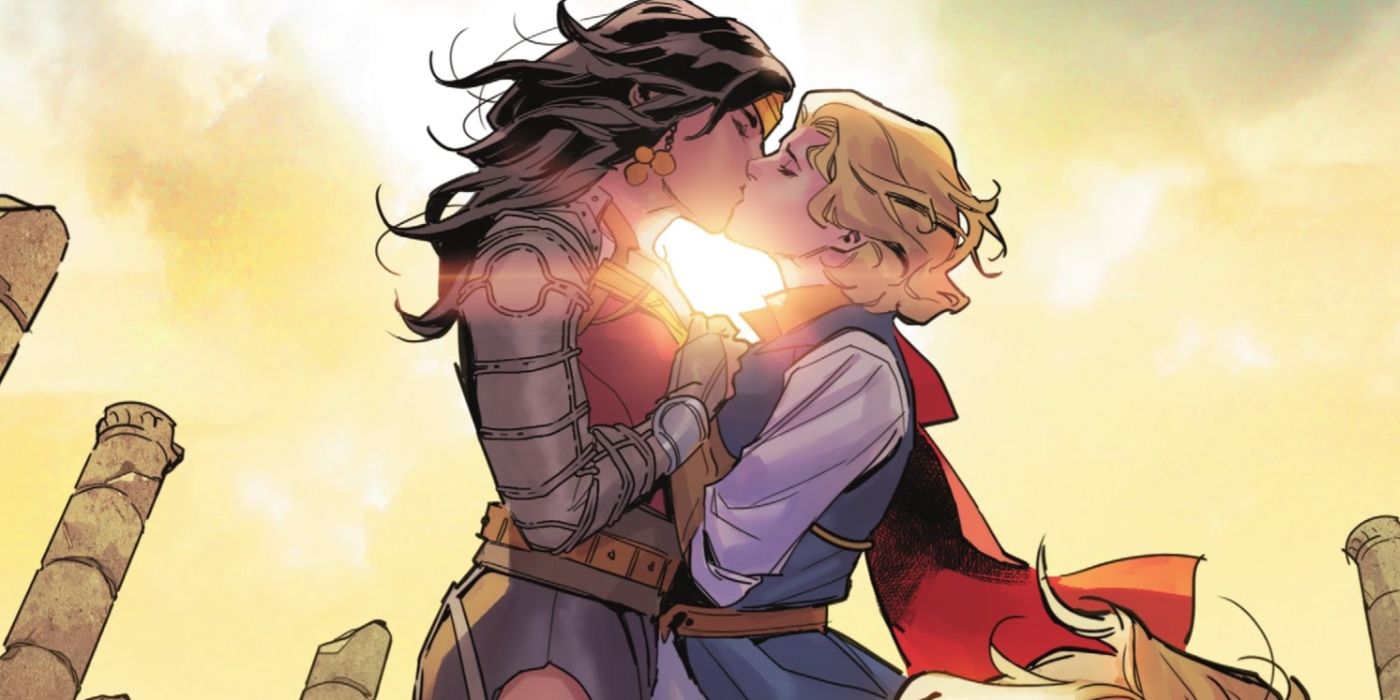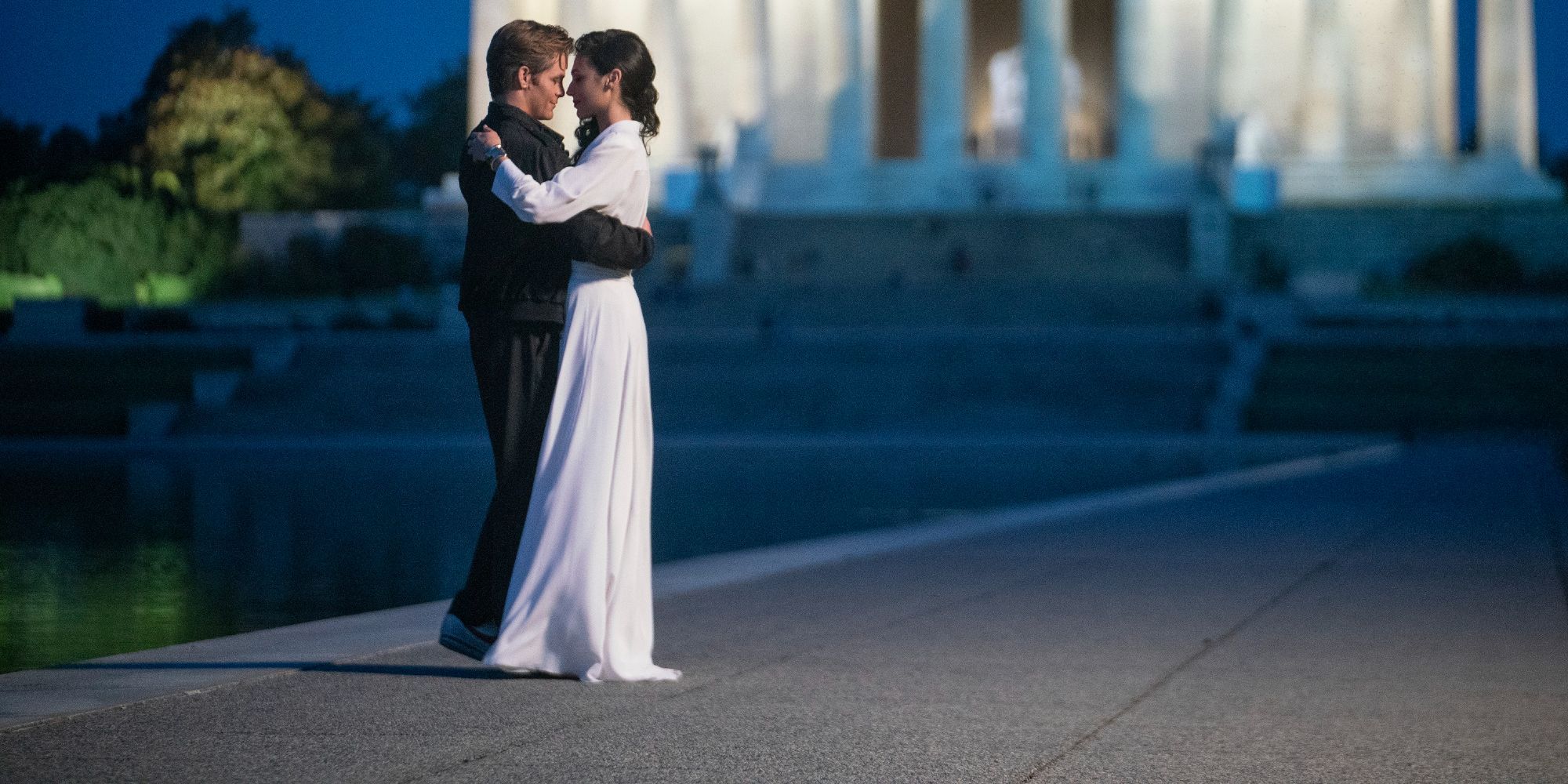
As one of the most legendary superheroes in comic book history, the release of 2017's Wonder Woman generated a major spotlight as the film industry's first woman-led superhero blockbuster. Despite the character's historic solo film, which was followed by 2020's Wonder Woman 1984, DC's success didn't come without its pitfalls—the most severe of which remains the lack of LGBTQ+ representation in Wonder Woman's DCEU portrayal. The DCEU's first two Wonder Woman films, starring Gal Gadot as the titular character also known as Diana Prince, feature Chris Pine's Steve Trevor as her love interest, though in the comics, Diana is bisexual. Warner Bros. and DC's oversight of Wonder Woman's LGBTQ+ identity highlights an insufferable trend in superhero films that DC can help to subside in Wonder Woman 3.
Wonder Woman's rich comic-book history dates back to 1941, and she was portrayed by Lynda Carter in her first live-action appearance in the 1975 TV movie The New Original Wonder Woman. At her core, the hero represents strength and female empowerment. Born on the female-only island of Themyscira, Diana lives amongst warriors known as Amazons, though leaves her homeland to experience and protect the world, a plot that served as the basis for Wonder Woman. As Diana fought to rid Earth of the god Ares' influence during World War I, she fell in love with military spy and skilled pilot Steve Trevor, who died at the end of the film. In Wonder Woman 1984, Diana resurrected Steve by wishing on the Dreamstone, though revoked her wish in the movie's final act. Steve is gone for good and likely will not return in Wonder Woman 3.
The DCEU has made strides recently to better represent the LGBTQ+ community. In the HBO Max series Peacemaker, John Cena's Christopher Smith has been confirmed by showrunner James Gunn as being bisexual, and co-star Danielle Brooks' Leota Adebayo is in a loving marriage with her wife, Keeya, which is frequently mentioned and incorporated as a significant part of the character's development throughout the series. While these inclusions are undoubtedly great for the franchise, the DCEU still has a great deal of distance left to travel when it comes to representation in their core tentpole films and characters. The DCEU's neglect of Wonder Woman's LGBTQ identity represents a colossal failure of the hero. Erasing Diana's bisexuality from the comics and centering her arc around a single romantic interest rejects a golden opportunity to represent the most authentic version of Wonder Woman and rightfully lend visibility to the LGBTQ community.

Wonder Woman's adventures in DC comics saw several female characters emerge as her love interests. Even though Steve is her most widely recognized romantic partner, Diana's time on Themyscira saw her fall in love with several fellow Amazons. Prior to leaving Themyscira, Diana exhibited a close relationship with a warrior named Kasia. In Wonder Woman: The True Amazon, Alethea, an Amazonian stablewoman, was Diana's love interest, though did not reciprocate Wonder Woman's affection. Mala was Diana's childhood friend and former lover, as portrayed in Wonder Woman: Earth One. Though these romances were largely rooted in subtext, in 2016, writer Greg Rucka confirmed Diana's canon bisexuality. Most recently, 2021's Dark Knights of Steel #2 featured Wonder Woman explicitly in a relationship with Princess Zala, the sister of Superman. With numerous female love interests in comic books, there's no reason why Wonder Woman should not have one in film.

Wonder Woman 1984 launched Diana's arc into a new era, rejoining the hero more than 60 years after the first movie. With Steve gone, Wonder Woman's sophomore feature film offered a golden opportunity for Diana to take up a new love interest — this time with a female character. Most obvious was the possibility of a romance between Diana and Kristen Wiig's Barbara Minerva, though director Patty Jenkins shot down those rumors while speaking to SFX prior to Wonder Woman 1984's release, explaining, "It might have [happened] in a different storyline, but because this storyline was so clearly about Steve coming back, the whole story was about Steve. It's all a love story with Steve. There wasn't room for two for Diana."
Although Minerva aka Cheetah also identifies as bisexual in the comics and the film subtextually manifests her interest in Diana, Wonder Woman remains fixated on Steve, incessantly mourning him decades after his death. Deciding against a much more sensible development for Diana, Wonder Woman 1984's writers instead pit Minerva against their main hero, muddling Wonder Woman's supposed symbolism of female empowerment. Additionally, claiming that Diana could not move on from Steve contradicts Wonder Woman's array of love interests from the comics. She shared relationships with Superman, Batman, and Aquaman, among many others in the comic books, thus, engaging her in a new romance in her sophomore film would not have posed a problem to her story. Regardless of Jenkins' intention, Wonder Woman 1984's emphasis on Diana and Steve's love story comes across as a rejection of the Amazonian's bisexuality.

Wonder Woman’s non-apparent bisexuality in the DCEU is a stark example of superhero movies neglecting LGBTQ+ comic book characters’ identities. For example, when Marvel's Asgardian warrior Valkyrie first appeared in Thor: Ragnarok, a scene evidencing her female lover was removed from the film's final cut. However, Valkyrie is slated to have a female love interest in Thor: Love and Thunder. Marvel has made strides in overtly portraying LGBTQ relationships, as Eternals' Phastos became the MCU's first gay superhero in 2021, and the Disney+ series Loki evidenced the titular character's bisexuality and gender fluidity. On DC's side, progress is harder to come by, as a brief mention of Harley Quinn's ex-girlfriend in Birds of Prey and police officer-turned-vigilante Renee Montoya is all the DCEU films have to show for LGBTQ+ representation.
The DCEU's failure with Wonder Woman is frustrating. Delivering the first female-led superhero blockbuster in 2017 (which was already long-overdue) could have prompted more history in the form of comic book movies' first on-screen LGBTQ+ relationship involving a lead hero. The value of representation cannot be understated and the LGBTQ+ community shouldn't have to beg to see itself in superhero movies, especially when so many characters exist in the comics on which these films are based. DC should be expected to incorporate Wonder Woman's bisexuality in films. In fact, Gal Gadot herself supported Wonder Woman's bisexuality, telling Variety in 2016, "She’s a woman who loves people for who they are. She can be bisexual. She loves people for their hearts."

Gadot and Jenkins will team up once more to complete Wonder Woman's DCEU trilogy. Wonder Woman 3 can still rectify DC's ignorance of Diana's bisexuality by pairing her with a female love interest. It's important to note that while more overt confirmation of Wonder Woman's bisexuality holds immeasurable value, there isn't one correct way to represent an LGBTQ+ identity. Diana can still exist as a bisexual woman without a female love interest, and her sexuality should not have to be spelled out in front of viewers for it to count as legitimate. Wonder Woman is a strong enough character on her own and does not necessitate a love interest to make her story worthwhile. Representing her bisexuality could come through dialogue — perhaps mentioning her past relationships from the comics, and thus making them canon to the DCEU. However, unapologetic depictions of LGBTQ+ relationships in movies are still rare, thus Diana's involvement with a female love interest in Wonder Woman 3 would go a long way in correcting these shortcomings.
It would be a terrible waste of a brilliant character to produce a trilogy of films for the most eminent female superhero without acknowledging her bisexuality. DC’s previous refusal to acknowledge Diana’s bisexuality through her first two DCEU solo outings is its biggest failure of Wonder Woman. While a character's sexuality certainly does not define them entirely, DC must step up and be willing to be more overt with its LGBTQ+ representation, even if it may lead to backlash and bans in some countries. The DCEU cannot turn down a third opportunity for so many LGBTQ+ viewers to feel seen through Wonder Woman.
Comments
Post a Comment